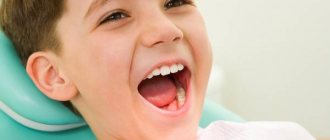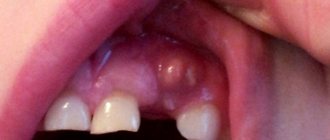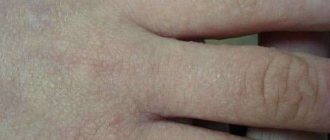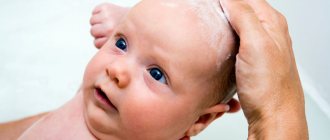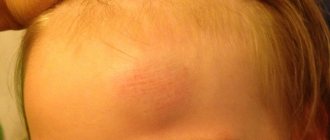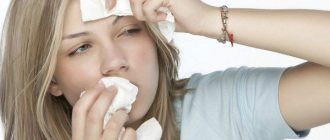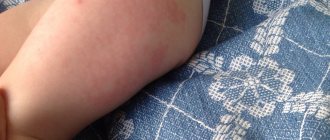In the first years of a child's growth, parents often have to face various difficulties. These could be diseases, various complications of the body, pain in certain parts of the baby’s body. A lump on a child’s neck—parents often turn to their pediatrician with such complaints. The reasons for its occurrence can vary greatly.
It is the correct diagnosis that is the first step towards successful treatment. Therefore, there is no need to self-medicate, but it is better to immediately consult a doctor, even if the child is not bothered by this lump.
Causes
If you notice an unknown formation that is located behind the ear, on the side, in front or behind the neck, you should immediately seek help from a specialist. Delayed treatment in some cases can lead to disastrous consequences, so under no circumstances should you postpone going to the doctor.
Among the most common causes of a lump on the neck may be:
- lymphadenitis. In this case, the lymph nodes in the neck become visually visible. They act as a natural filter for the body. When an infection is detected, they increase significantly in size and may become painful. Inflamed lymph nodes are the first sign of disease in the body. The cone can reach several centimeters in diameter. With complications, lymphadenitis can also manifest itself as an increase in body temperature, redness of the skin area;
- parotitis. This disease is classified as viral. People simply call it “mumps,” and most patients are children. In this case, intoxication of the body is observed, as well as damage to the salivary glands and nervous system. This disease is transmitted by airborne droplets;
- lipoma or atheroma. In this case, a lump on a child’s neck most often does not hurt and is not a life-threatening phenomenon. In recent years, such diseases have become increasingly common. Atheromas (wen) can increase in size over time. Such a lump on the right side of the neck or in any other area rarely causes discomfort, but it is still better to remove it, because such lumps can become inflamed and even rupture;
- ear fistula. If a child's lump is located in the ear area, it is likely that it is a fistula. Most often, this disease is hereditary, much less often it occurs as a result of a long-term inflammatory process. Lateral fistula is the most common;
- cervical cyst. Such a lump on the back, front, or behind the ear is in most cases painless. In appearance it may resemble a tumor, but it does not pose a great threat to the body. Doctors recommend removing cysts immediately after detection;
- furuncle. This disease is characterized by an inflammatory process of the hair follicle and nearby tissues. In this case, the child’s lump can be located in any part of the neck;
- osteochondrosis. According to statistics, about 50 percent of children suffer from this disease. In this case, the lump on the neck is most often located behind the ear or on the back side. The main signs of the disease include headache, dizziness, and vomiting. Pain increases when turning the head;
- the presence of a malignant tumor. Over time, it begins to grow in size, so under no circumstances should you delay going to the doctor. Only in this case can you cope with the disease.
Fistulas
Ear fistula is a congenital pathology. It is located near the base of the ear, near the cartilage. The canal exits either into the middle ear or into the oral cavity, sometimes into the neck.
This lump grows with the baby and, as a rule, does not cause problems until inflammation occurs.
In this case, the lump becomes noticeable. It turns purple and enlarges. After the inflammation is relieved, it is removed.
A lump that appears on the right side of the neck may be due to the appearance of a suppurating cyst. The probability of such a pathology does not exceed 5 percent of the total number of children born with pathologies of the jaw or face. There are two types of cysts:
- median;
- lateral.
Most often the first occurs. Doctors believe that it forms in the fetus as an anomaly in the thyroid-lingual duct, in the first month. In subsequent months, the fetal thyroid gland moves to the neck from the sublingual region. Over time, the channel connecting it disappears. In this case, it may not resolve, and as a result a closed cavity appears, called a cyst. If there is a canal, it becomes a fistula.
A median cyst can usually be observed in the middle part of the neck. It very rarely grows more than 2 centimeters. It doesn’t hurt, but it can grow noticeably when inflamed. Suppuration often occurs.
Such a lump needs to be opened and cleaned of pus. After healing, it is subject to excision. The operation is carried out no earlier than the child turns three years old. However, in case of systematic inflammation, it can be removed earlier.
Manifestations
In most cases, bumps on a child's neck can be seen with the naked eye. It can be located near the ear, on the side, in front or behind the neck. Among the main symptoms are:
- increase in lump size over time;
- worsening breathing (if the lump is located in the front). In such cases, you should immediately call an ambulance;
- increase in body temperature, appearance of skin redness.
It is not always possible to cope with the manifestation of such symptoms, so it will simply be impossible to do without the help of a qualified doctor.
What does a lump on the back of your neck mean?
The most unfavorable cause of compaction in the neck is lymphogranulomatosis - a tumor, usually large , of various shapes.
In the initial stage, this area may not bother the carrier. Redness, itching, fever, and other signs appear later .
Don't wait for the situation to get worse . In the initial stages, the disease is more treatable than advanced disease.
There are other factors that influence the appearance of the lump, such as a wen or lipoma. This problem is not dangerous, rather cosmetic in nature .
This pathology occurs due to metabolic disorders, a lot of adipose tissue is formed.
An interesting property of such a formation is the ability to move , over short distances, but still.
Other causes may include a boil (popularly known as an abscess), trauma, an allergic reaction to medications , food, or dyes.
We will also consider the reasons for swelling of the lymph nodes in the neck area on the child’s body: it could be an infection (acute respiratory infection, runny nose, sore throat) or ear diseases, diseases of the oral cavity .
Pay attention to the inflammation of the nodes. If only one is inflamed, that is where the infection is located; lymphocytic leukemia - a benign tumor formed from tissues of the lymphatic system may be the cause.
The liver, kidneys, lymph nodes throughout the body are affected, also an insect bite, allergies and, unlikely, but still, a cyst.
Other causes may also be tumors , fibroids, strokes.
Let's see how to increase the amount of breast milk for nursing mothers. Which remedies are the best according to doctors? Why do bristles appear in newborns - https://mamavika.com/detsk-zdorov/novorozhden nyie/shhetinka-u-novorozhdennyih.html. How can you fight it and is it worth doing at all?
Treatment
Treatment can begin only after the cause of the lump on the child’s neck has been established. To find out what it might be, the first step is to see a doctor. Most often, a diagnosis can be made after an external examination of the child, but in some cases it will be necessary to do an ultrasound. Treatment should be prescribed by a specialized specialist; only in this case can the problem be dealt with as soon as possible.
Self-medication in such cases can only worsen the situation, so under no circumstances should you risk your baby’s health.
When infectious diseases are detected, as Dr. Komarovsky and other experts say, one cannot do without the use of antibiotics and immunostimulating drugs. As for lipomas, they are removed surgically, like ulcers. Malignant tumors are treated according to a special scheme, depending on the location of the lump.
ball on a child's neck
So, plasticine! Some parents may think that plasticine is a very “dangerous” material for the home environment: it sticks to everything and leaves greasy stains, not to mention the fact that a child can simply swallow it. We hasten to dissuade you: plasticine is an excellent material for creativity, which you just need to learn how to use correctly. Why you need to sculpt from plasticine Modeling is a very important activity for a child, which develops creativity, fine motor skills, spatial thinking, the concept of color, shape of objects. In addition, modeling (and not necessarily from plasticine) has a beneficial effect on the nervous system as a whole. In general, the benefits of modeling are enormous. Which plasticine is better? You need to choose good quality plasticine; it should be neither too hard nor too soft and stretchy. If plasticine sticks to your hands, then it is difficult to sculpt with it - try it yourself. And if it is too hard, then it is difficult for children to knead it, and the parts may fall apart. Small children should never be given plasticine with a fruity smell. If yellow plasticine smells like lemon, orange like orange, and red like strawberry, then the baby will not sculpt, but lick it, and this is not at all what we want to teach him. Where to start classes in modeling from plasticine First, remember that during modeling classes you will have to be next to the child, not only as a “supervisor” (so that he doesn’t eat the plasticine), but also as a creator (sculpt yourself, together with the child). Secondly, do not overdo it with the complexity of tasks for your baby, do not demand too much from him. Remember that at one and a half to two years the child is just getting acquainted with the properties of plasticine, studying them and experimenting with modeling techniques. What can a one and a half to two year old child do with plasticine? • pinch off a piece of plasticine; • flatten the plasticine with your entire palm; • poke your finger into the rolled out layer; • roll it into “sausages”; • use your finger to make small cakes from the balls that mom rolls. • stick it to paper or table; • roll large balls with your palms; • cut the “sausage”. Modeling classes with children over one and a half years old are based on these actions. Develop these skills, expand and improve them. How and what to sculpt from plasticine with your baby Choosing a color Start by choosing the color of plasticine: invite your baby to choose, for example, from two colors (you shouldn’t offer the whole box of plasticine at once, otherwise your baby’s eyes will simply run wild). The main thing is that the child is attracted and not repulsed, so do not choose for your child yourself - your preferences may differ greatly. Warm-up When the color is chosen, don’t expect the baby to start sculpting something himself. Knead the plasticine with your hands: let the child knead his block, and you knead yours. After the “warm-up” you can proceed directly to sculpting. Basic steps Show your child how to knead plasticine, pinch off a piece of it, make a cake out of it... In general, follow the basic steps described above. For the first lesson, performing simple manipulations will be enough to interest the child. Pieces Pinching off pieces of plasticine is one of the favorite activities of kids. Direct this activity in the right direction - stick the pieces onto thick cardboard or just onto a sheet of paper. A more complicated version of this task: stick pieces of plasticine “with meaning”: “decorate” a drawn Christmas tree, hang apples on drawn apple trees, etc. “Sausages” and balls Roll “sausages” and balls from plasticine: with two palms or one palm on a piece of cardboard or paper. The resulting “sausage” can be rolled into a ring or into a snake. And small balls can be crushed with your fingers. Prints One of the most fun activities for kids is to make prints on plasticine. You roll out a plasticine cake, and the baby pokes it with everything you can (or rather, everything you offer him): a toy fork, a felt-tip pen cap, his own finger, a spoon. Clinging Invite your child to cling plasticine to a glass or any other container, which can then be decorated with beads or any other material - it will make an excellent vase. For younger kids, you can cut out templates of different figures and stick plasticine on them. Plasticine and other materials When modeling from plasticine, you can (and should!) use other materials: peas, beans, buckwheat, pasta of various shapes and colors, buttons, etc. Roll out flat cakes from plasticine and invite your child to stick small objects on them (this is very useful for developing fine motor skills in a child’s hand). Make sure all these wonderful items go into the play dough and not into your mouth. Author: Elena Starry Borodina ChuChildhood Helen Mom
uncategorized
Messages: 13010 Gifts: Subject: Re: How to teach a child to sculpt from plasticine Thu 17 Feb 2011, 16:20
How to teach a child to sculpt from plasticine. First lessons with plasticine. Classes can begin, I think, as early as a year. If your baby puts absolutely everything into his mouth, including plasticine, you can purchase special edible plasticine for the little ones. It wrinkles wonderfully, which is important for teaching children, and if a child accidentally eats a piece, it’s okay. As an option, you can make your own salt dough, an excellent material for modeling. For classes, in addition to plasticine, we will need: * cardboard of different sizes * colored paper * foil * cereals (rice, buckwheat) * pasta, vermicelli * small jar (for example, baby food) * newspaper It is best to do one, maximum two point per lesson, so as not to overtire the child. For the convenience of studying, you can sit your child opposite you in a high chair with a table, or on your lap. 1. Make a flatbread. Roll a ball from well-heated plasticine. Use your child's finger to make a dent in it, then continue with each finger in turn. Together with your child, knead the plasticine until you get a cake. Save it - after all, this is your child’s first creation! 2. Rays. Roll a plasticine ball. Place it on a piece of cardboard (optimally 10*10 centimeters in size). Help the baby turn the ball into a cake, do not forget to praise the baby. Now press the cake with your finger and pull the plasticine to the side to make a ray. Make several rays in all directions. Tell your child what he got - depending on the color of the plasticine, it could be a flower, a star or a sun. 3. You can complicate the previous lesson. Roll a smaller ball (of a different color) and place it on the finished sun. Make a new cake on top of the previous one and stretch the rays in different directions in the same way. It will turn out amazing! 4. Top and bottom. Make two horizontal strips of plasticine on the cardboard, top and bottom. Take cereals (rice, buckwheat, millet, pea halves). Place the cereal first on the top strip, saying “Put the millet on top,” then on the bottom strip, saying “Put the millet on the bottom.” Thanks to this exercise, the child remembers the concepts of “up” and “down”, and, importantly, develops fine motor skills. 5. Portrait. Roll a ball out of plasticine. Mash it with your child on a piece of cardboard into a round cake. Make eyes, a nose, and a mouth on the flatbread using different cereals. Fine vermicelli will make great hair. 6. Landscape. Take cardboard, cover the lower part with green plasticine - this will be grass. Make a yellow sun in the upper corner, as in the second lesson. Draw a path from cereals on the grass, and in the sky, on the side opposite from the sun, make a blue cloud (an oval-shaped cake). Add rain to the cloud - long pasta. 7. Underwater world. Cover the whole cardboard with blue plasticine - this will be the background. We decorate the lower part of the picture – the bottom – with cereals (rice, buckwheat) or shells. We glue pre-cut fish from cardboard to the blue background. You can make a tail, fins, and eyes out of plasticine for fish. All that remains is to add algae; to do this, you need to cut foil and colored paper into thin strips and stick it on our picture. 8. Prints. Knead a large flat cake on a sheet of cardboard. We take any objects, toys, dishes - whatever comes to hand, and leave imprints on the cake with them. Coins, caps from felt-tip pens, small molds, spoons and forks will do... Tell your child what this or that print looks like. 9. Rosette. Roll out a ball of red plasticine with a rolling pin or knead it with your fingers into an oval. We twist the oval into a tube, clamp one edge and place it on a thick long pasta - a stem. The result is a red rose. You can make a couple of oval cakes and attach them to the stem - these will be the leaves. 10. Hedgehog. Roll a ball out of plasticine and stretch it a little to one side to form a nose. Stick thin pasta or vermicelli - hedgehog needles - into the back of the hedgehog. 11. Flower in a pot. Pour finely chopped newspaper into a small jar, cover the top of the jar with a cake of brown or black plasticine (earth). Place a plasticine ball on a long thick pasta and stick the pasta into the “pot” with the other end. Stick thin pasta into the ball to make a flower. You can attach several oval-shaped petals to the pasta stalk. Instead of a flower, you can plant a cactus on the stem. Roll a green plasticine ball or a thick sausage and stick it into the “ground”. Take a lot of small pasta (vermicelli), stick them into a ball (sausage), like cactus needles. 12. Snail. Make a long sausage by rolling a piece of heated plasticine between the child’s palms. Twist a spiral from the sausage, bend the free end slightly outward, stick a couple of vermicelli into it, representing horns. Horns can also be made from a piece of plasticine. 13. Bracelet. Make two long multi-colored sausages, twist them together with a flagellum and connect the ends. 14. Chicken. Roll up a plasticine ball and stick two thick pasta on one side - these will be the legs of the chicken. So that he can stand, attach a small cake to the tips of his legs, or place him on a larger green cake - like grass. Make a neck from another pasta and place a smaller ball on it - the head. The tail, beak, and wings can be made from plasticine, or you can stick pasta in the right places, make eyes from cereal, buckwheat or medium-sized beans are best. You can make a whole zoo in the same way! Good luck with your activities with your baby, may modeling bring him joy!
Prevention
To protect your child as much as possible from the occurrence of such a disease, you should carefully follow just a few recommendations from doctors. This applies to moderate loads, which can manifest themselves in the form of running and active recreation. Do not forget about a balanced diet, which is extremely important for a growing body. This is the only way the child will be able to receive the required amount of vitamins and minerals.
- It is necessary to protect the child as much as possible from consuming large amounts of sweets and carbonated drinks. It can cause bumps on the neck.
- Do not forget about ventilation of the room and wet cleaning. The health of you and your children directly depends on this. Every day the baby should spend at least 1-1.5 hours in the fresh air.
- Hardening the body is another method to strengthen the child’s immunity and protect him from the occurrence of strange formations on the neck.
- During the winter season, you should take care of purchasing vitamins by consulting your pediatrician in advance. In this case, right, left or posterior fistula, as well as other diseases, are definitely unlikely to occur in the child. It is also better to visit your pediatrician regularly for preventive examinations.
Preventing a disease is always easier than treating it. Therefore, you should not put off going to the doctor until tomorrow. By following the above rules, your child will be maximally protected from various ailments.
Vessels
Enlargement of the Jugular Vein in the Neck: Causes of Phlebectasia
Feb 03, 2020 Kokh V. A.
14243
Vessels
Vein in the Neck Pulsates
Feb 01, 2020 Kokh V. A.
35551
Vessels
What else could a lump on your neck be?
Wen. This benign tumor is completely harmless if it is small. But over time, education increases, which is fraught with the emergence of serious problems. A large wen in the form of a lump on the neck compresses the nerve endings and blood vessels, pinching the tissue. As a result, the circulatory system is disrupted and metabolism becomes abnormal. The child feels severe discomfort and aching pain, especially when feeling the wen.
Malignant tumor. A lump on a child's neck, which is a malignant formation, is rare. Such a tumor can affect organs in the neck area, for example, the thyroid gland.
Cyst. It becomes noticeable when there is inflammation in the middle or side of the child's neck. The formation is characterized by round, sometimes oval, outlines and soft contents.
